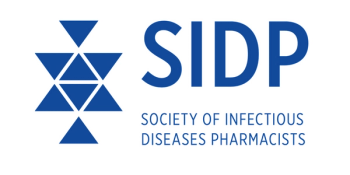
Common COVID-19 Comorbidities in NYC Patients
Hypertension, obesity, and diabetes are the most observed comorbidities among infected patients in the New York City area.
Safiya Richardson, MD, MPH
Hypertension, obesity, and diabetes were the most common comorbidities among COVID-19 patients in the New York City area, according to a recent paper published in
Investigators from the greater New York City area examined data from 5700 COVID-19 patients admitted to 12 Northwell Health hospitals in order to describe their clinical characteristics and outcomes. The patients were treated in New York City, Long Island, and Westchester County, NY between March 1 and April 4.
The investigators, led by Safiya Richardson, MD, MPH, of the Feinstein Institutes for Medical Research at Northwell, collected patient data including demographic information, comorbidities, home medications, triage vitals, initial lab tests, initial EKG results, diagnoses during the hospital course, inpatient medications, treatments (including mechanical ventilation or kidney replacement therapy), and outcomes such as length of stay, discharge, readmission, and mortality.
The median age of the patients was 63 years and 39% were female, investigators reported. The most common observed comorbidities were hypertension (56%), obesity (41%), and diabetes (33%).
At triage, about one-third of the patients had a fever, 17% had a respiratory rate greater than 24 breaths per minute, and about a quarter of the patients received supplemental oxygen.
Mortality rates were higher for male compared to female patients, which continued at every 10-year age interval older than 20 years.
By the end of the study, 2634 patients were discharged or had died. Of those, 14% had been treated in the ICU, 12% received invasive mechanical ventilation, and 3% were treated with kidney replacement therapy. Deaths were reported in approximately 1 in every 5 patients, the study authors reported.
Of the patients who required mechanical ventilation, 3% were discharged alive, 24% died, and almost three-fourths remained in hospital. Mortality rates of those who required mechanical ventilation aged 18 to 65 years was 76%, while those over 65 had a mortality rate of 97%. The study authors reported no deaths in patients under the age of 18.
The average length of stay was about 4 days and the median post-discharge follow up time was also 4 days. There were 45 patients readmitted during the study period, and the median time to readmission was 3 days.
Of the patients who died, those with diabetes were more likely to have received invasive mechanical ventilation or ICU care compared to non-diabetics. Additionally, of those who died, those with hypertension were less likely to have received invasive mechanical ventilation or ICU care compared to those without hypertension.
Most of the discharged or deceased patients had available data about home medical reconciliation, and the investigators determined that 7% were taking an angiotensin-converting enzyme inhibitor (ACEi) at home and 11% were taking an angiotensin II receptor blocker (ARB) at home. Of patients taking an ACEi or ARB at home, half continued to take it while in the hospital.
For patients with hypertension not taking an ACEi or ARB, taking an ACEi, or taking an ARB, the mortality rates were 26%, 32%, and 30%, respectively.
“This study reported mortality rates only for patients with definite outcomes (discharge or death), and longer-term study may find different mortality rates as different segments of the population are infected,” investigators concluded. “The findings of high mortality rates among ventilated patients are similar to smaller case series reports of critically ill patients in the US.”
Newsletter
Stay ahead of emerging infectious disease threats with expert insights and breaking research. Subscribe now to get updates delivered straight to your inbox.






























































































































































































































































































